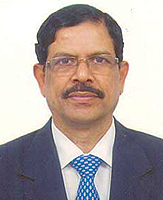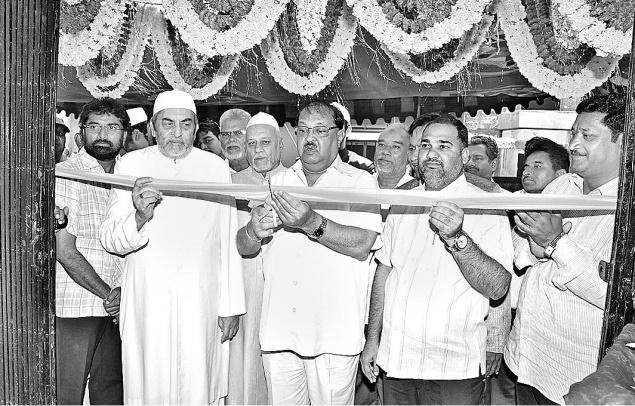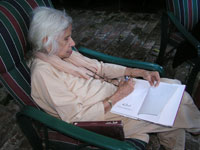Agra:
As the political capital, first of the Mughals and later the British, Agra was always a key centre of political action. The city played a crucial role in the freedom struggle but poor documentation of records has failed to highlight the contribution of the freedom fighters, say local historians.
Syed Ikhtiyar Jafri, director of the Mirza Ghalib Research Academy, who recently released a paper on the contribution of Urdu journalists, said “for whatever reasons the authentic history of Agra`s contribution to the freedom movement, to arts and literature, suffers from poor documentation of records, and therefore the contribution under-valued.”
Hardly any documented history book on the `Braj region` is available that could provide a true picture though fragmented pieces, mostly in newspapers are there for study. “Interestingly, Agra was a major centre of Hindi and Urdu journalism, and we have a long line of fighters with the pen,” says Prof Amit Mukherjea, head of the history department at St John`s College.
The first call for freedom in 1857, ignited by the visits of Nana Sahab, Azimullah Khan, Maulvi Ahmadullah Shah and dozens of other revolutionaries to the city, drew passionate support from the local youth who targeted government installations. Thousands of Hindus and Muslims, particularly in the rural hinterland, rose in revolt which forced the colonial rulers to declare Martial Law in the area.
The rebels against the imperialists were more active in the rural areas than in the city till Tantya Tope shifted base to Agra and the mohallas around Agra College and Gokulpura became the hotbeds of unrest. The heroes of the 1857 revolt, Thakur Heera Singh, Thakur Govind Singh, Chand Baba and Thakur Prithvi Singh continued to lead the mutineers with rare valour.
With the introduction of the railway and opening of the Tundla station in 1862, the city became the transit point of revolutionaries from the East. In 1857 the family of Jawaharlal Nehru migrated and settled in Agra following disturbances in Delhi. Motilal Nehru was born in Maithan mohalla in 1861.
The visits of Tilak, Lajpat Rai and the late Mahatma Gandhi in 1920 and 1929 galvanised the youth and the city came into prominent focus.
Revolutionaries like Bhagat Singh, Chandra Shekhar Azad, Raj Guru and Sukhdev stayed here for days in the Noori Darwaza area, making bombs. A series of bomb blasts and conspiracies like the Hardy Bomb case, explosions in Sheetla Gali, Moti Katra, Barah Bhai ki Gali and other parts sent shock waves in British cantonments.
On the vanguard of revolutionary activities were journalists like Pandit Sri Ram Sharma, Mahendra Jain, Devendra Sharma, Goverdhan Das, Ganpati Kela and Hari Shankar Sharma, in addition to scores of poets and litterateurs.
Ram Chandra Bismil from Mainpuri had fired the imagination of youth with his revolutionary writings. Bismil`s “Shaheedon ki chitaon par lagenge har varash mele, watan par marne walon ka yahi namo nishan hoga,” rings an echo to this day.
Hindi daily Sainik of Sri Krishna Dutt Paliwal was the first to launch a frontal attack on the British colonists. Some of the best editors of the time including Ageya served as editors of this daily. The success of Sainik gave impetus to a long line of periodicals including Hanumant Singh Raghvanshi`s Swadesh Vandhav, Laxman Singh`s Praja Hiteshi, Taja Tar, Ujala, Citizen, Punch and dozens of others.
Women played a crucial role leading protest marches and participating in dharnas. Saroj Gaurihar, Parbati Devi, Bhagwati Devi Paliwal, Sukh Devi, Damyanti Devi Chaturvedi, Satyawati, Angoori Devi Jain, Shiva Dixit, Chandra Kanta Mishra, Vidhyawati Rathod and Heera Bahen Hemraj Betai of the INA were some of the leading figures of that era.
“So many others were there and there was absolutely no gender bias or differences,” says Saroj Gaurihar recalling her activities during those years, adding that “the boycott movement against foreign goods was recognized as the most successful by Motilal Nehru in Agra” in a speech.
Two stalwarts of the freedom movement, Thakur Ram Singh, the hero of Kala Pani, and Prof Siddheswar Nath Srivastav, died recently.
Officially, Agra witnessed 110 violent incidents that resulted in the death of British officials or destruction of property. The famous Hardy Bomb case, Postal Robbery case, Chamraua and Jaunia bomb cases at railway stations are still talked about.
Contrary to popular belief, the city played a very crucial and notable part in the hundred years preceding independence in 1947, but much of the record and documentation work has been lost.
“With more than 400 leaders arrested for varying terms in jail at different times, Agra`s contribution needs to be re-assessed and recognised,” says veteran media activist and former president of the press club Rajeev Saxena.
With railway connectivity to all parts, and situated on the borders of the Deccan plateau, the Thar desert and the Doaab region, Agra was naturally the key hub of revolutionary activities, says senior citizen Surendra Sharma.
IANS
source: http://www.zeenews.india.com / Z News / Home> News> India News> States News> Uttar Pradesh / Friday – August 14th, 2015














